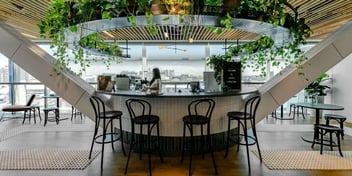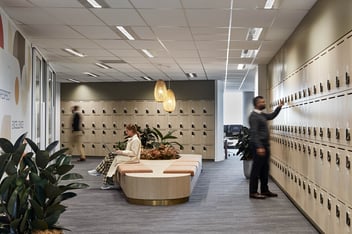The pandemic has changed workplace expectations, unlike anything that has come before. But the appetite for change existed well before Australia’s first confirmed case of COVID-19.
In 2018, SuperFriend’s Indicators of a Thriving Workplace report surveyed 5,000 Australian workers from different industries. 1 in 4 reported high stress in their current role. Of these, 1 in 5 said they planned to leave their employer in the next 12 months. These pre-pandemic figures hardly paint the portrait of a workforce satisfied with the status quo.
If the world was walking towards the future of work then – it’s sprinting now. Two years of unprecedented disruption have changed the role of the workplace. As the workforce takes its first tentative steps back into the office, businesses need to work hard to keep pace with these employee expectations. Those who fail to do so may struggle to attract and retain talent in today’s competitive job market.
Here are the main changes and how your business can adapt.
Spotlight on tech and data
Tech and data will both have a transformative effect on the role of the workplace.
Technology is already making workplaces more effective. Think of the impact platforms like Google Workplace, Slack and Jira have had during the pandemic (that’s not even mentioning workflow software like Trello, Monday and Asana). This software has been instrumental in managing projects and breaking down information silos. Post-pandemic, the continued use of these platforms will mean more time for creativity and innovation.
With staff likely to work from home at least once a week, workplaces will evolve. Videoconferencing is a great example. Software like Zoom and Microsoft Teams have forever changed the meeting, WIP and catch-up. Hybrid working models cater for these technologies with bespoke meeting spaces integrated with these platforms, so remote staff aren’t penalised.
Data can also be utilised to drive workplace change. For instance, a company may realise that with hybrid working arrangements only 50% of the workforce is in at any one given time. The company would then be able to change to a hot-desking working arrangement and dedicate other space in the office to collaboration and creativity.
Focus on wellbeing
For employees who have grown attached to the lifestyle benefits of remote work, a focus on wellbeing is less of an added perk and more of a prerequisite.
So, it’s encouraging to see businesses evolve to meet this expectation. 7 in 10 Australian employees now believe leadership places a greater priority on wellbeing. There is a range of benefits to be realised by this focus shift, from greater productivity to reduced staff turnover.
It’s not fanciful to think of the workplace of the future as a positive space employees relish spending time in, rather than a space they return to with reluctance. To achieve this, business leaders and office designers need to consider a range of questions:
- How can the space maximise sunlight and fresh air?
- What measures are in place to encourage activity?
- Can the acoustics be changed to avoid excessive noise?
You can find inspiration in Axiom’s showcase.
Commitment to sustainability
Just as voters are pressuring politicians for tangible action towards sustainability, so too are employees expecting greater commitments from their employers.
A 2021 survey of over 1,200 Australian workers by Atlassian and PricewaterhouseCoopers (PwC) found that 74% of employees think businesses should be just as concerned with their social impact as financial results (up from 69% from the same survey in 2020).
There are many ways businesses can demonstrate their commitment to sustainability, including:
- Going paperless
- Reusing items and having a recycling program in place
- Reducing energy with light-efficient fixtures and temperature regulation
- Adding plants and greenery to the office
- Working with sustainable suppliers.
The future is here
The role of the office is different, but it isn’t redundant by any stretch of the imagination. Businesses that recognise and prepare for this shift will remain attractive places to work. Explore more in our future of work in Australia guide.






